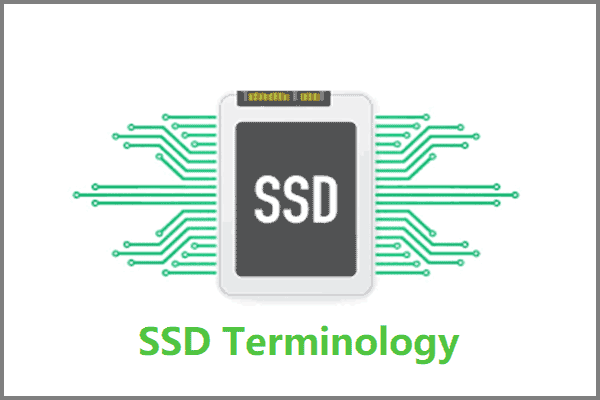Do you know about the idea of direct-to-Ethernet SSD? This article will introduce it to you. With direct-to-Ethernet SSDs, you can access storage devices faster. With MiniTool Partition Wizard, you can manage your SSD easily.
SSDs Directly Accessed over Ethernet
In order to simplify the storage access stack, the idea of directly accessing storage drives across Ethernet is proposed.
This idea is first surfaced with Seagate and its Kinetic disk drives. Kinetic drives apply a key:value store instead of the traditional file, or block storage, which are mediated through a controller manipulating the drive’s data blocks.
Further Reading:
Kinetic disk drives had an on-board NIC and a small processor implementing a key:value store. The host server operated the drive as a key:value store so that the drives were directly accessed over Ethernet.
However, there was complexity in writing host software to handle the kinetic drives and the lack of significant benefit compared to the existing ways of accessing disk drives. Hence, customers had little appetite for kinetic drives.
In addition, Seagate was a prominent champion of kinetic drives but its technology appears to have fallen by the wayside in 2015 or 2016.
Toshiba and Samsung all support the idea of SSDs directly accessed over Ethernet. However, Samsung supports the key:value drive store idea but Toshiba opposes it.
Direct Ethernet Access SSDs
Toshiba proposed an Ethernet-addressed SSD with a support for the NVMe-over Fabrics (NVME-oF) protocol at the Flash Memory Summit (FMS) 2018.
Further Reading:
NVMe-oF uses the NVMe protocol across an Ethernet or Fibre Channel network to move data to and from a storage target that is addressed at drive level. The data is accessed at remote direct access memory (RDMA) speeds, meaning a few microseconds latency.
At the same time, the smart NIC intercepts the NVMe-oF data packets, analyses them and passes them on to a drive using the NVMe protocol.
At FMS 2018, Toshiba put 24 of its SSDs inside an Aupera JBOF (Just a Bunch of Flash drives) chassis. They were connected to a server host via a Marvell 88SN2400 NVMe-oF SSD converter controller, with dual-port 25Gbit/s Ethernet connectivity.
From its 24 drives, the chassis achieved 16 million 4K random read IOPS, which was claimed at that time to be the fastest random read IOPS rate recorded by an all-flash array. Each drive achieved 666,666 IOPS.
Samsung KV-SSD
In November 2018, Samsung disclosed that it was working on a similar Ethernet-addressed drive, the Z-SSD. The SSD’s underlying device was a PM983 SSD with an NVMe connection and it had an on-board key:value store, making it a KV-SSD.
Samsung said it would eliminate block storage inefficiency and reduce latency.
Toshiba’s NVMe-oF All-Flash JBOF
At FMS 2019, Toshiba has gone one step further, giving its SSD a direct NVMe-oF connection. In addition, the demonstration SSD uses Toshiba’s 96-layer 3D NAND and has an on-board Marvell 88SS5000 converter controller.
This SSD has 8 NAND channels and a DRAM up to 8GB. It also can communicate with Marvell data centre Ethernet switches so as to link to servers.
The 88SS5000-SSD combination can deliver up to 3GB/sec of throughput and up to 650k random IOPS. This combination is a bit slower than the FMS 2018 system’s SSDs.
Prospect of the Two SSDs
The idea of a direct-to-Ethernet SSD is advanced by multiple storage end users, server and storage system OEMs and SSD makers. Toshiba is just the first one to go public with a market-ready product.
Toshiba’s NVMe-oF SSDs are compatible with the Ultrastar Serv24-HA, a flash JBOF product of Western Digital; and an OpenFlex composable systems product that uses NVMe-oF to interconnect the devices.
Obviously, the next step for Western Digital is to bring out its own direct-to-Ethernet SSD for the Serv-24-HA chassis, and to use it in the OpenFlex system. Another obvious possibility is that DriveScale supports Toshiba’s direct-to-Ethernet SSD because Toshiba supports the DriveScale Composable Infrastructure.
Compared with Toshiba’s NVMe-oF SSD, marketing the KV-SSD will be a tougher job because the key:value store idea adds another dimension to the sale for customers to take on board.


![How to Measure Disk Performance Easily [Step-By-Step Guide]](https://images.minitool.com/partitionwizard.com/images/uploads/2019/06/disk-performance-test-thumbnail.jpg)
User Comments :